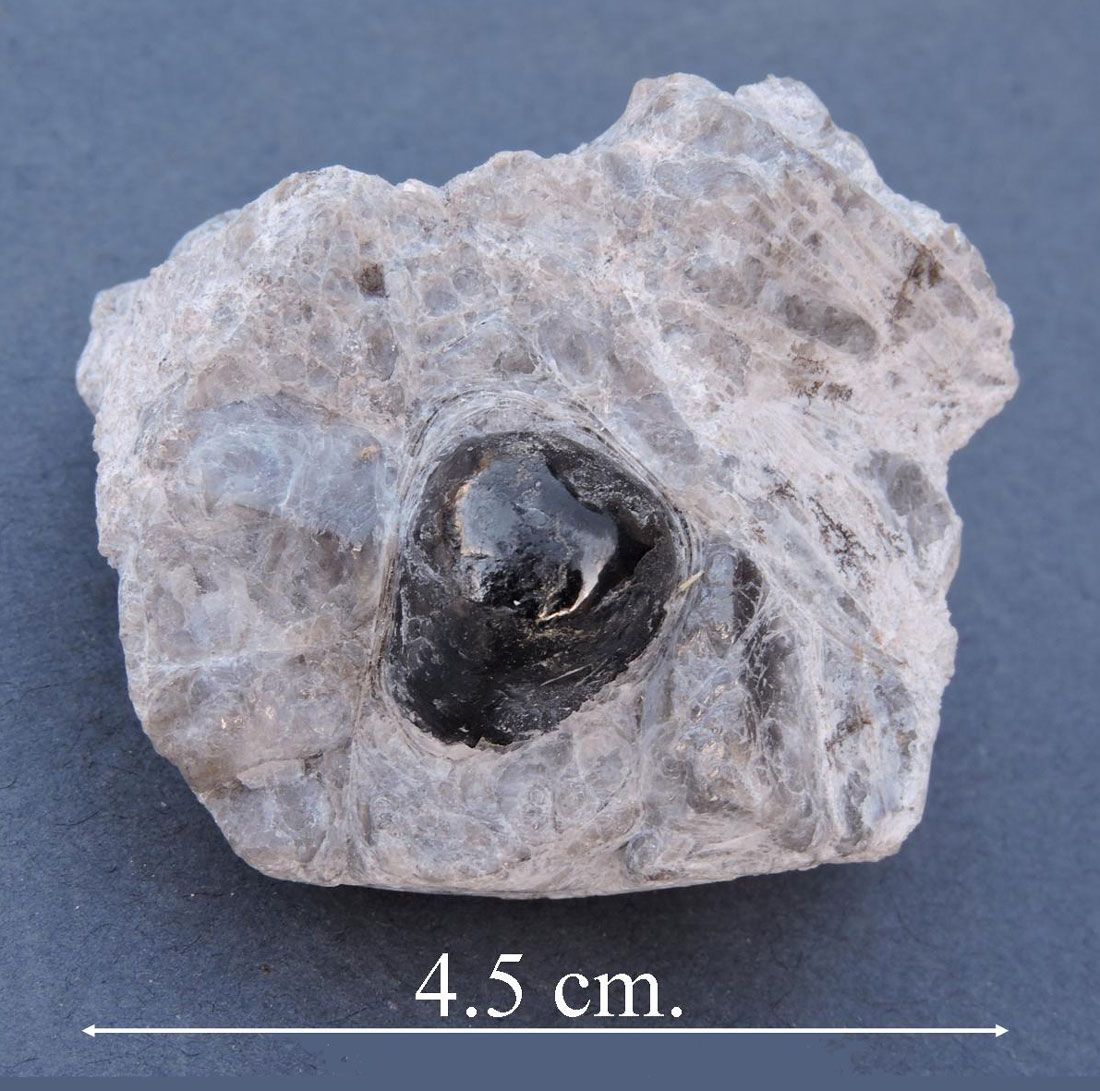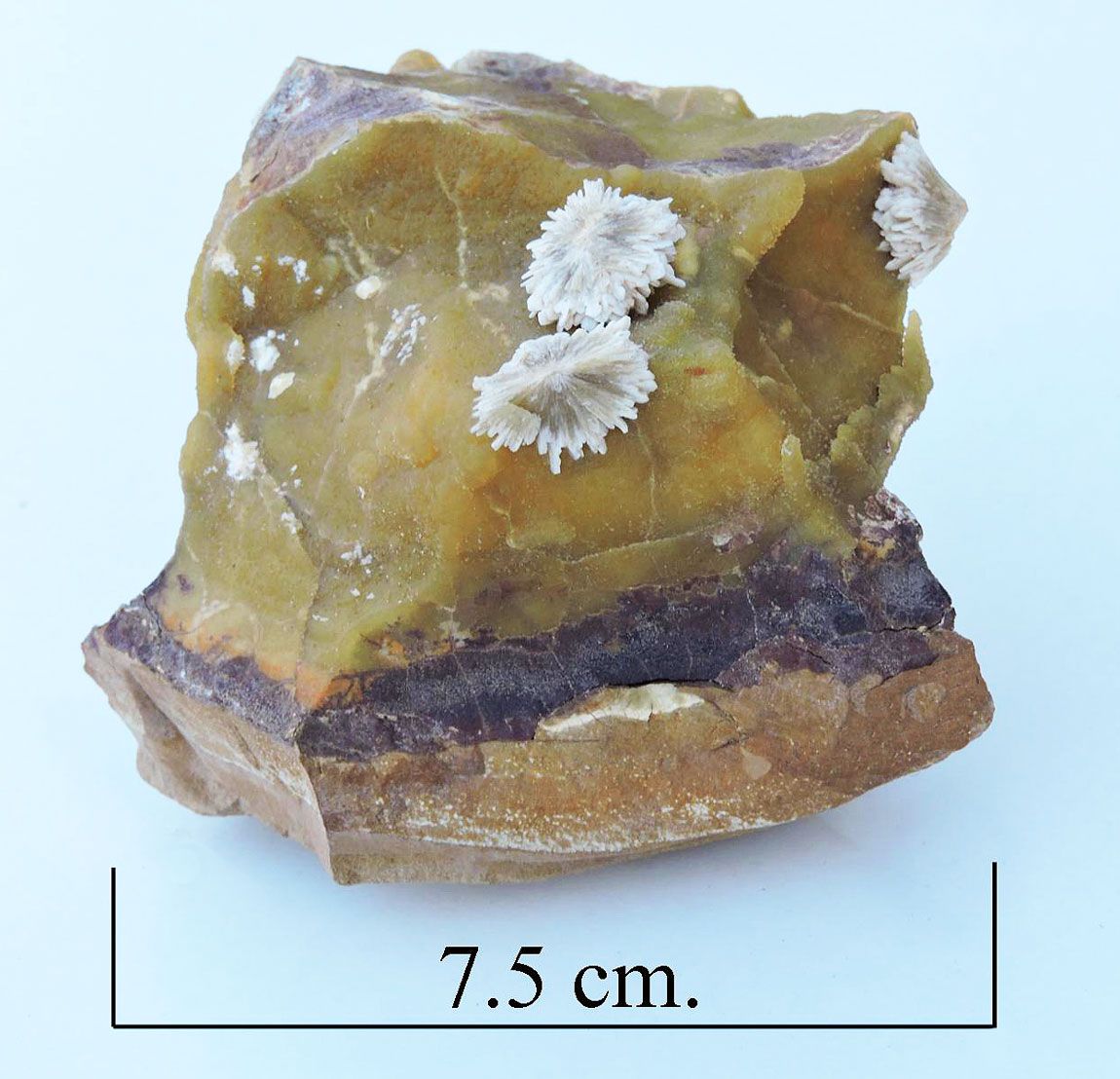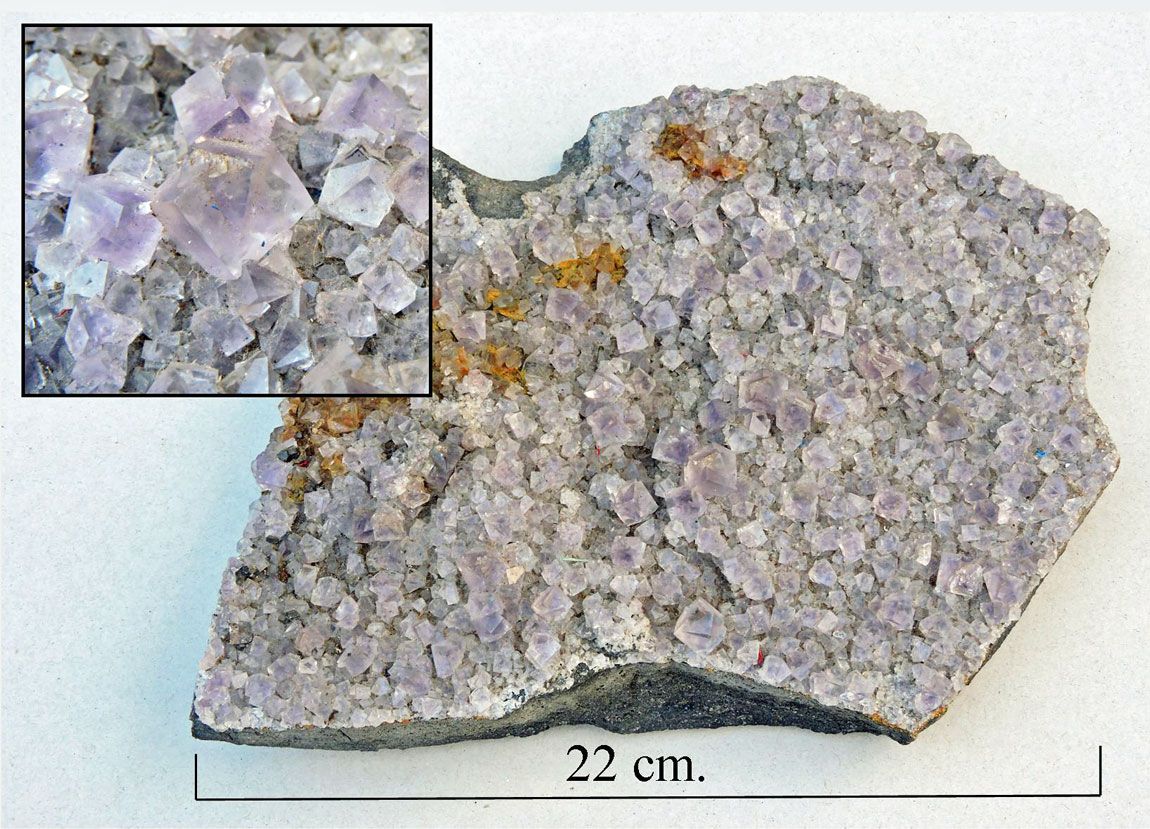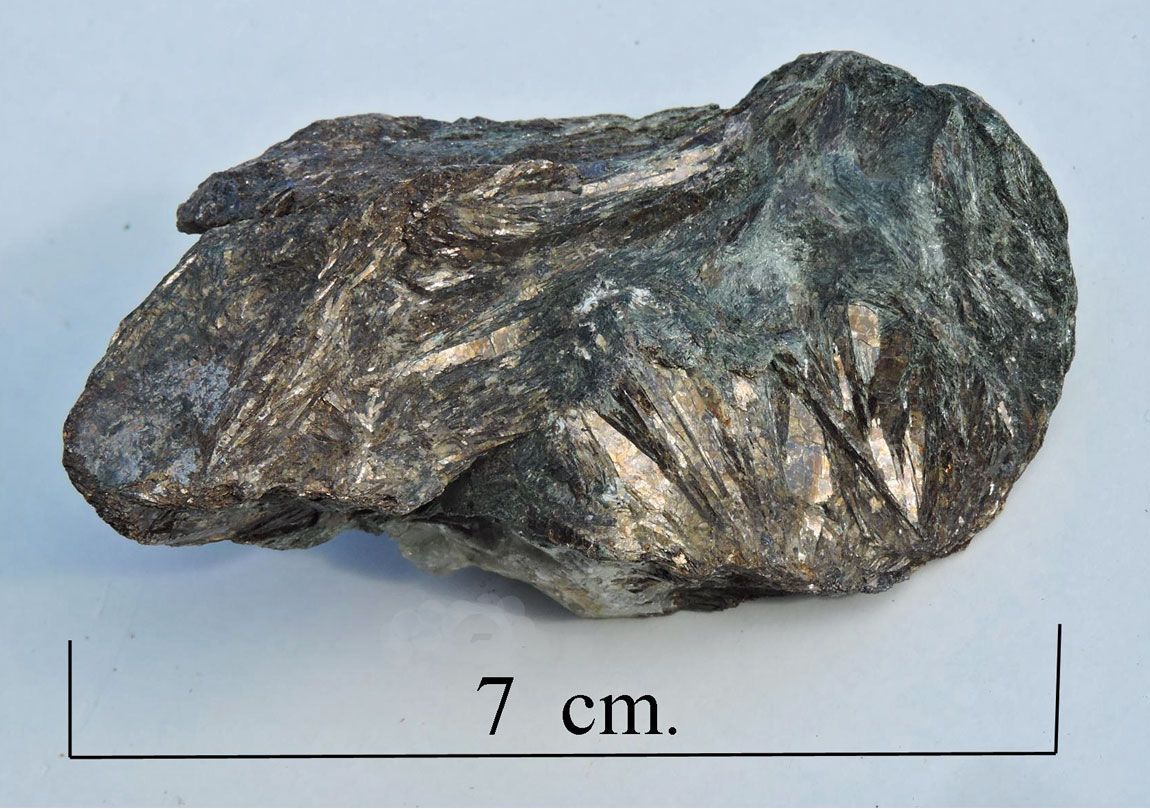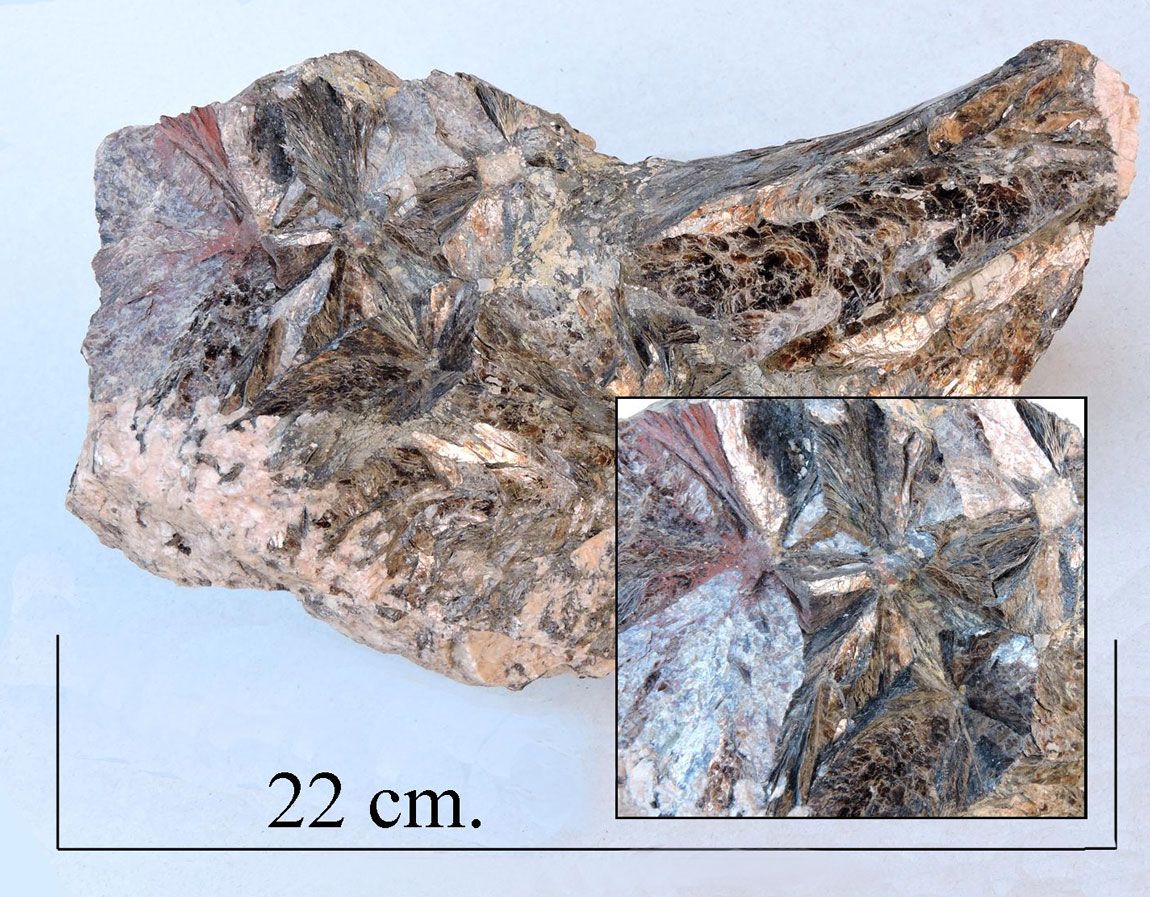
Biotite mica. Cornwall.
Biotite is classified as a mineral, but is actually a common group of phyllosilicate minerals with the approximate formula of K(Mg,Fe)3AlSi3O10(F,OH)2 This specimen is simply labelled as from from Cornwall, but after investigation of it's appearance, it is very similar to other specimens collected from Trelavour downs, St.Dennis, Cornwall which have been described as having radiating, foliated, reddish brown mica sheets. If my assumption is correct, it probably also has a lithium, Li, content,and can be called Lithium, Biotite mica.
